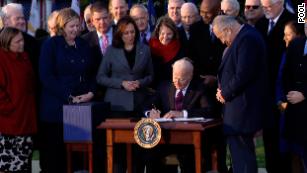By Cheryl Pellerin (DoD News)
WASHINGTON — Twenty-five years ago, amid the chaos that surrounded the 1991 dissolution of the Soviet Union, two senators, a Republican and a Democrat, established an unlikely program whose goal was to safeguard the crumbling empire’s arsenal of nuclear weapons.
At the time, the Soviet Union had tens of thousands of nuclear weapons and enough enriched uranium and plutonium for tens of thousands more.
It also had 40,000 tons of chemical weapons and a deadly stockpile of biological agents ready for use, Defense Secretary Ash Carter said on Monday during a Pentagon award ceremony.
The ceremony was held to celebrate the 25th anniversary of the Cooperative Threat Reduction Program, and to give awards to some of those who helped to create the program.
Moment of Change
“Today we come together as a community to thank some of the forward-thinking statesmen and public servants who helped make that historic moment of change far less dangerous, and to learn from their work as we work to shape another era of profound global change,” Carter said.
Georgia Democrat Sam Nunn and Indiana Republican Richard Lugar established the Cooperative Threat Reduction Program as the Nunn-Lugar amendment — formally the Soviet Nuclear Threat Reduction Act of 1991 — to the implementing legislation for the Conventional Armed Forces in Europe Treaty.
The amendment authorized the use of $400 million in fiscal year 1992 Defense Department funds to help the Soviet Union and its former satellite nations destroy nuclear, chemical and other weapons, transport and safeguard weapons undergoing destruction and establish verifiable safeguards against proliferation.
Brand-New Problem
“This was a brand-new problem in those days — brand-new to history, really, requiring new thought,” Carter said.
It was the first disintegration of a nuclear nation, he added.
“And while people had considered accidental nuclear war since the Cuban Missile Crisis and the ‘Dr. Strangelove’ movie, they tended to think of the weapons systems themselves in that context, and the vital technological problems of first-strike capabilities, mutually assured destruction and the like. All important,” Carter said.
Few appreciated that command and control was a human social system that could not be immune to the disintegration of the social system in which it was embedded, the secretary added, noting that Nunn and Lugar understood from their work with Soviet leaders on arms control over the decades “that deterrence alone would not protect us against destruction in the new situation.”
“This new form of nuclear danger required something new,” he added.
Carter said the very idea of the Nunn-Lugar program — to work with the custodians of the former Soviet arsenal — was very new.
“We had spent half a century bringing the Soviet Union to its knees,” he said. “To help them, even fund them, to control the vast nuclear legacy of the USSR seemed paradoxical to many, and it was controversial.”
Trailblazer Award
Carter himself, as assistant secretary of defense for international security policy under then-Defense Secretary William Perry, was in charge of making the program work.
“We brought on a number of people, whom we honor today, to handle different aspects of the program, and they did it superbly and they made history,” Carter said. To some of the members of the first team that helped bring the program to life, Carter presented the first Nunn-Lugar Trailblazer Award:
— Gloria Duffy, Carter’s deputy assistant secretary of defense, who was in charge of negotiating agreements with Russia, Ukraine, Belarus and Kazakhstan, and of coordinating the program;
— Susan Koch, a deputy assistant secretary of defense in charge of coordinating the Nunn-Lugar program with U.S. global arms control efforts;
— Laura Holgate, Carter’s assistant at Harvard who later was deputy assistant secretary of defense for cooperative threat reduction and who now is special assistant to the president and director of weapons of mass destruction, terrorism and threat reduction on the National Security Council; and
— Jane Wales, then-chair of the Cooperative Security Program at the Carnegie Corporation, who funded Carter’s nonproliferation work, was later a senior director on the National Security Council and special assistant to the president, helping to coordinate cooperative threat reduction work with interagency partners.
“The CTR framework continues today,” said Carter, who praised members of the Defense Threat Reduction Agency, which is responsible for the program.
The program has evolved, the secretary said.
“It has extended its focus to terrorism; not just disintegrated states,” he said. “It has extended its work to chemical and biological weapons. And it has gone global, far beyond the borders of the former Soviet Union.”
Carter said the Defense Department faces similarly profound and seemingly insurmountable challenges today, and cooperative threat reduction history “shows that we can and we will overcome them.”
“These threats also require new thinking of the kind that CTR represents and new ways of operating, like I’m challenging our department to show today,” the secretary said.
Nunn-Lugar Room
To mark the 25th anniversary, he added, the department is dedicating what will now be called the Nunn-Lugar conference room in the secretary of defense corridor on the E-Ring across from Carter’s office.
“From this day on, anyone who enters the Nunn-Lugar room — presidents and policymakers, military and civilian officials, scholars [and] business leaders — will walk past a plaque that reminds them of the forward-thinking programs, the bipartisan cooperation, and the enduring legacy of Senators Nunn and Lugar.”
Just before the ceremony ended, Nunn noted that the department and the nation are at another historical junction.
“We have all sorts of problems with Russia,” he said. “We have the Ukrainian problem, we have the Middle East, we have a lot of differences, but we still have 90 percent of the nuclear weapons, 90 percent of the nuclear materials and the know-how to try to prevent catastrophe.”
The former senator added, “The danger is still out there, particularly … with radiological dirty-bomb weapons, as well as chemical [and] biological. So we’ve got to build a bridge to work with the Russians on this subject, even when we’re disagreeing with them profoundly on other things.”







Osarumwense Okunmwendia liked this on Facebook.